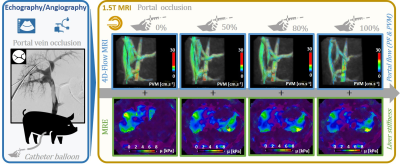Simon Chatelin1, Raoul Pop2,3, Céline Giraudeau2, Khalid Ambarki4, Ning Jin5, François Séverac1,6, Elodie Breton1, and Jonathan Vappou1
1ICube, UMR 7357 CNRS, University of Strasbourg, Strasbourg, France, 2IHU-Strasbourg, Institute of image-guided surgery, Strasbourg, France, 3Interventional Neuroradiology Department, University Hospitals of Strasbourg, Strasbourg, France, 4Siemens Healthcare SAS, Saint Denis, France, 5Siemens Medical Solutions USA, Inc., Chicago, IL, United States, 6Public Healthcare Department, University Hospitals Strasbourg, Strasbourg, France
1ICube, UMR 7357 CNRS, University of Strasbourg, Strasbourg, France, 2IHU-Strasbourg, Institute of image-guided surgery, Strasbourg, France, 3Interventional Neuroradiology Department, University Hospitals of Strasbourg, Strasbourg, France, 4Siemens Healthcare SAS, Saint Denis, France, 5Siemens Medical Solutions USA, Inc., Chicago, IL, United States, 6Public Healthcare Department, University Hospitals Strasbourg, Strasbourg, France
By coupling 4D-flow MRI and MR-Elastography,
this study investigates the extent to which a portal occlusion due to portal
vein thrombosis may attenuate the increase in stiffness due to moderate
fibrosis and potentially lead to false-negative diagnosis using elastography.

Figure 1. Graphical abstract of the experimental protocol.
Portal occlusion induced by portal vein thrombosis were modeled by successive
inflations of a balloon catheter in the portal vein of four pigs. Portal peak
flow (PF), peak velocity magnitude (PVM) and liver stiffness µ were then
measured using 4D-Flow MRI and magnetic resonance elastography (MRE) for
successive inflation states.

Figure 2. Results showed a
dependence of liver’s shear modulus with portal PVM (A) and PF (B). The
reduction of the portal venous blood flow resulted in a decrease of liver
stiffness. Consequently, portal occlusion implied by portal vein thrombosis may
attenuate the increase in stiffness due to moderate fibrosis and lead to
false-negative diagnosis with elastography. Spearman’s rs rank
correlation coefficients close to 1 indicate individual monotonic relationships
(p-values are indicated).
